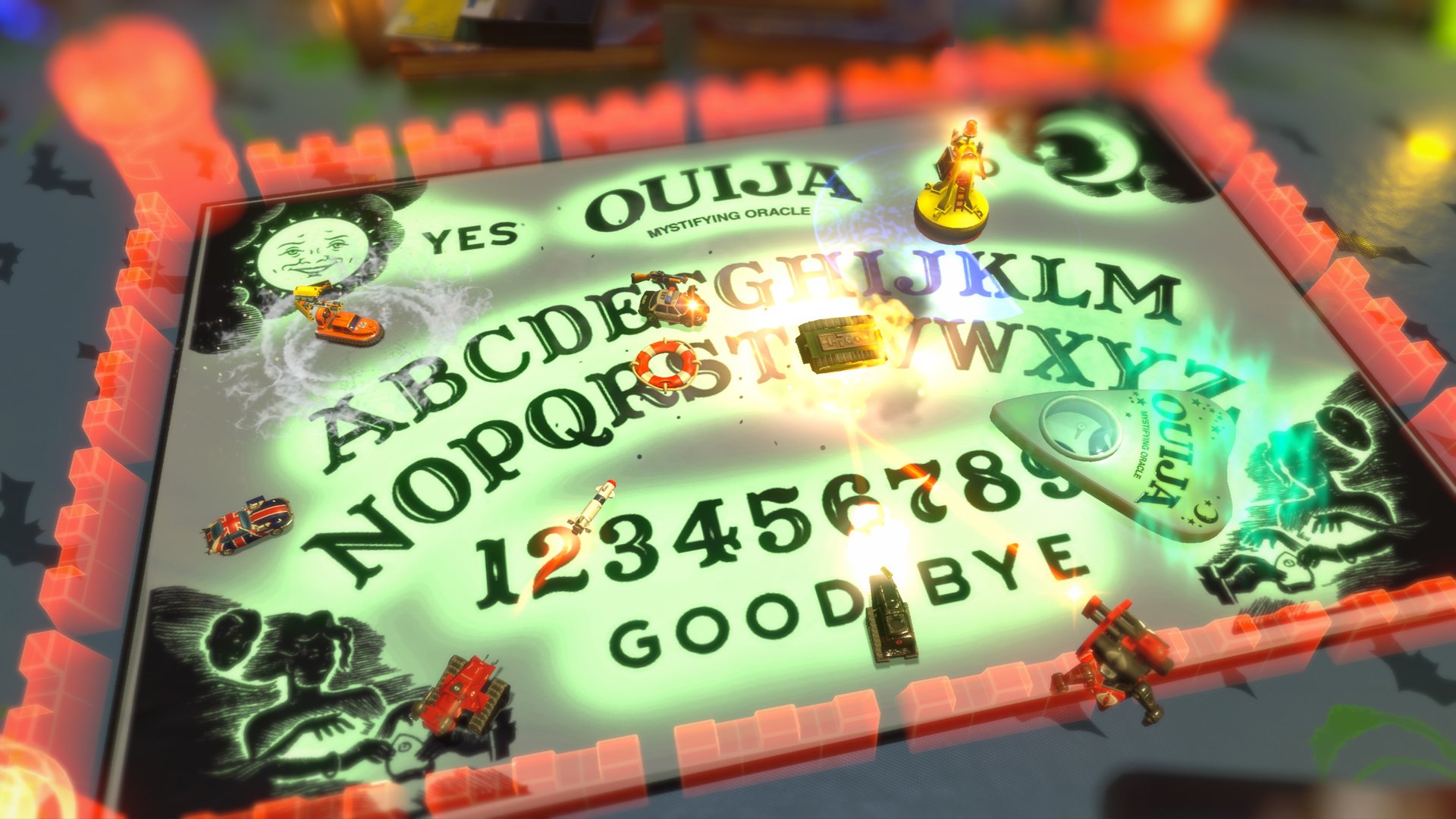A flawed form of flattery
Micro Machines World Series wants to be Overwatch. It’s an odd fit for a top-down racer to draw inspiration from a hero shooter, but that’s what World Series does. The influence is immediately apparent — from the different classes of vehicles each outfitted with their own abilities and ultimates, to the identical loot box/unlockables system (don’t fret, there aren’t any microtransactions).
In a way, this mimicry elevates Micro Machines World Series. The ambitious imitation at the heart of this game has an infectious enthusiasm about it, like it wants to be more than we expect of it. However, in a more meaningful way, there’s not enough substance for it to ever make good on that ambition. What little is here goes threadbare before long.

Micro Machines World Series (PC, PS4, Xbox One [reviewed])
Developer: Codemasters
Publisher: Deep Silver
Released: June 30, 2017
MSRP: $29.99
Where World Series most earnestly tries to be like Overwatch is where it strays furthest from its roots. A Battle mode pits two sides of six against each other in classic king of the hill and capture the flag scenarios. (There’s another one where you try to carry a bomb into the opponent’s base, which is kind of just capture the flag in reverse.) There are 12 different car types and each of them serves a specific role. For example: the healer is an ambulance, the spy is the car that can do covert cloaking stuff, and the tank is a literal tank.
All of this is great in theory, but World Series‘ style doesn’t lend itself well to proper execution. There’s an inherent lack of control that comes with the top-down presentation, meaning that it’s often difficult to play with any real precision. Combined with the clusterfuck nature of the skirmishes, it’s tough to feel like there’s any greater strategy being employed.
The other major mode, racing, homogenizes everything in that it strips the abilities from the individual vehicles in favor of randomized pickups along the track. The five-lap circuits are quick and that helps nicely underscore the arcade nature of this game. There are 10 courses, many of which are modified retreads from Codemasters’ recent non-Micro Machines title Toybox Turbos.
Racing feels (stick with me here) more reliable in its completely frenetic and unreliable ways. The 12-car races prominently feature blunder after blunder, as everyone bumps into one another and causes frequent careening off the track. The three power-ups (bomb to lob behind you, hammer to smash near you, and ineffective gun to shoot ahead of you) complicate everything, and it’s not uncommon for one of these to send you from the front of the pack to last place.
That is chiefly due to the fact that Micro Machines World Series revels in its rubberbanding, a genre faux pas for more serious racers. It works in a kinda-frustrating way for Micro Machines, mostly because it’s often ingrained into the design. A few of the maps have devices to highlight this — like the billiards pocket that spits everyone out super close to one another, and the toaster that pops all the cars up in the air together.

In my experience, I was just as likely to benefit from Micro Machines World Series‘ quirks as I was to be hindered by them. Pseudo-mastery of the floaty, slidey controls only goes so far, as each race is still determined partly by luck. Clean racing can prove effective, but it’s really a clean start that’s most important. Separating from the rest of the cars is the only way to feel in control of your fate.
Codemasters is selling this game partially on the strength of its couch competitive multiplayer and that’s an ill-conceived pitch. Local options are pared down to: a battle arena that takes place on a static screen, and an elimination type race where you win the round by going fast enough that the other players fall off-screen. The former doesn’t represent the best of the battle modes, and the latter doesn’t represent the best of the racing. Technical limitations feel as if they kneecapped this offering as it’s probably not feasible to render the game four times over for split-screen; I’ve noticed significant stuttering and hiccups on Xbox One on some of the busier racing courses.
But, it’s not really possible to play with many other people online either, at least currently. At the time of writing, Codemasters appears to be having difficulties getting World Series‘ online multiplayer properly functioning. I’ve played around 100 matches and 5 other humans is the most I’ve ever been up against. Usually it’s myself, one other person, and 10 bots. Also, the ranked mode seems to be delayed indefinitely as the game says there are 91 days until the next “season” of competitive play begins.

The troubled launch of online features is exponentially compounded by the fact that there is no single-player content to fall back on. There isn’t a campaign or anything of that nature to at least provide unique objectives. The only resort is to take on the AI over and over, first having to wait for the matchmaking timer to max out before you’re allowed to begin. At least the AI is relatively skilled, better than most real people I’ve played against so far.
There’s something genuinely charming and interesting to Micro Machines World Series, but whatever that is quickly drowns in repetitive tedium. Bolting Overwatch‘s sensibilities onto a game like this is a novel idea but Codemasters never leans far enough in any one direction. As a result, this feels like a shell of a few different possibilities — none of them ever making good on their individual promise.
[This review is based on a retail build of the game provided by the publisher.]









